Cartagena stands out as one of the safer cities in Colombia.
In 2022, Cartagena welcomed 3.7 million visitors, and by and large, travelers felt secure during their stay. Yet, international travel advisories are resolutely a traffic light stuck between yellow and green, advising travelers to visit, but only with a high degree of caution.
Are you planning a last minute trip to Cartagena? We’ve put together all the resources you’ll need for a fun & safe travel:
🛌 Best & Safest Places to Stay in Cartagena:
👉 Hotel Boutique Casona del Colegio – Free WiFi, Bar, Restaurant
👉 Sophia Hotel – City view, Pets allowed, Superb breakfast
👉 GHL Arsenal Hotel – Key card access, Free WiFi, Fitness centre
👉 Osh Hotel Getsemani – Fitness centre, Airport shuttle, Very good breakfast
⛱️ Fun Activities & Tours in Cartagena:
👉 Biking Tour Cartagena
👉 Boat Rental in Cartagena de Indias
👉 Cartagena ATV Tour
🚗 Best & Safest Cartagena Transportation Services:
👉 Airport Pickup Service – Welcome Pickups
👉 Rent a Car – DiscoverCars
🙏 Stay Safe While Travelling:
👉 Safetywing (for medical insurance)
👉 VisitorsCoverage (for trip insurance)
Is Cartagena Safe?
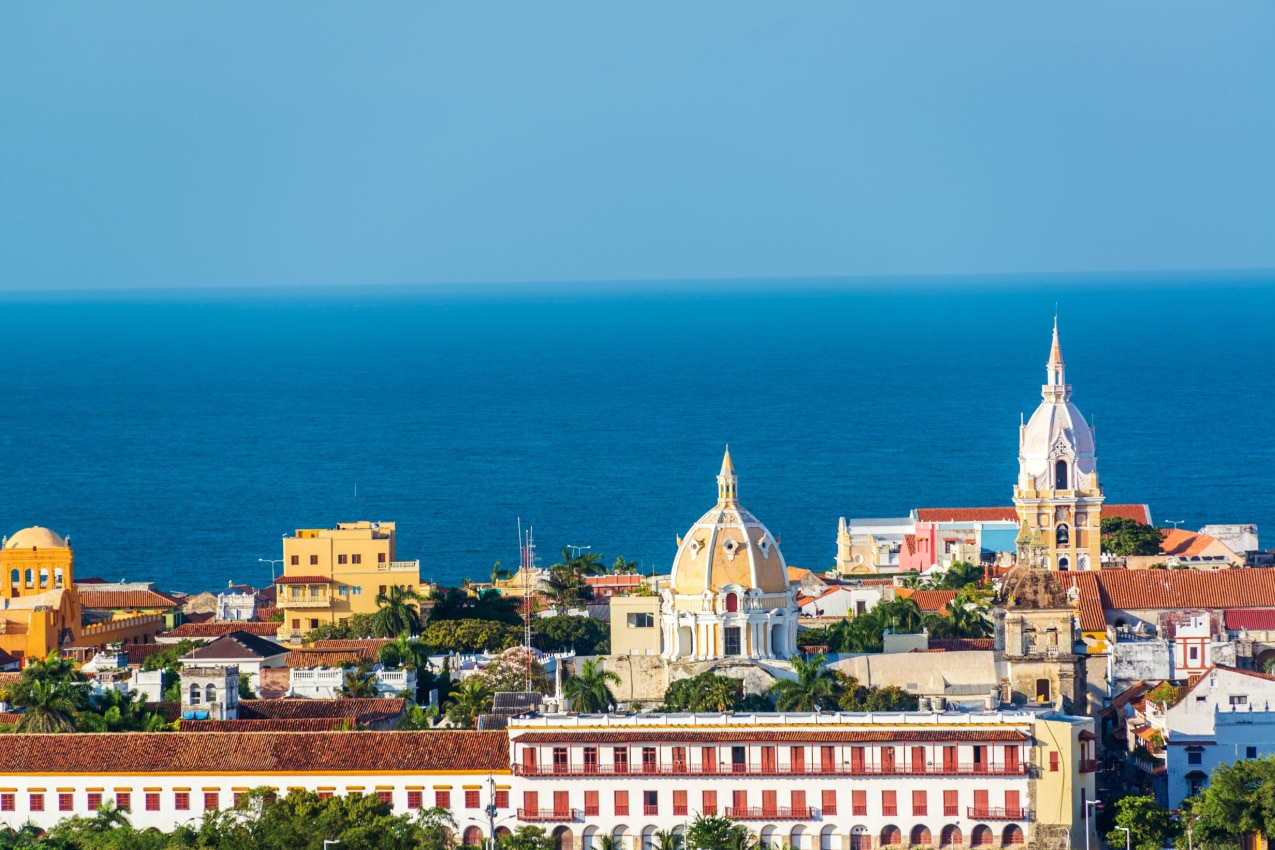
Cartagena is not the safest city in the world, but in terms of Colombia, it’s one of the safest destinations to visit.
The fall of drug lord Pablo Escobar brought the city some calmness and made it a more attractive place to visit. Plus, most violent crimes occur away from areas that are popular with tourists, so visitors seldom find themselves in danger. Still, you need to be very careful when visiting Cartagena.
Here’s the scoop:
- International travel advisories: Level 2, exercise a high degree of caution
- Crime rating: 54.56
- Most committed crimes: Petty thefts, drug-related offenses, and assaults
- High crime areas: El Paraiso, Sector La Magdalena, La Maria, Olaya, and El Pozón
- Public transportation safety: Not safe; city and rural buses are frequent targets for theft
- Safety walking alone during the day: High
- Safety walking alone during the night: Moderate
- Road safety: Generally safe, but the traffic in certain areas is very heavy and some roads may be poorly maintained
- Beach safety: Plenty of lifeguards, beach surveillance centers, and safety flags
- Shark attacks: None
- Common natural disasters: Hurricanes and earthquakes
- Carbon monoxide poisoning: No recorded incidents
- Police presence: Plenty, but not enough to combat all crime
- Medical care quality: High-end hospitals, 24/7 pharmacies, and affordable prescriptions
Travel Advisory for Colombia
According to the international travel advisories, Colombia’s main challenge is violent crimes. As a result, the Canadian, NZ, UK, and Australian travel advisories unanimously agree on visiting Colombia only with a “High Degree of Caution.” This places the country in the Level-2 safety category. The U.S. travel advisory is stricter, placing Colombia under a “Reconsider Travel” warning (Level-3).
When you’re in Columbia, avoid going to:
- Arauca
- Caquetá, excluding the city of Florencia
- Cauca, excluding the city of Popayan
- Chocó, excluding the towns of Nuquí, Bahía Solano and Capurganá
- Within 50 km of the border with Venezuela, excluding the city of Cúcuta
- Within 100 km of the border with Panama
- Within 50 km of the border with Ecuador, excluding the border crossing at Ipiales
- Norte de Santander, excluding the city of Cúcuta
- The Port of Tumaco and the city of Buenaventura
Additionally, skip all but essential travel to:
- Antioquia, north of the city of Buriticá, west of Highway 62 and west of Highway 60 along the borders with Choco, Risaralda, and Caldas departments, excluding the cities of Jardín, Andes, and Hispania
- Córdoba, south and west of the city of Montería
- Guainía
- Guaviare
- City of Cúcuta
- Meta, excluding the city of Villavicencio and Caño Cristales
- Nariño, excluding the cities of Pasto and Ipiales
- Putumayo
- Valle del Cauca, excluding the cities of Buga, Cali and Palmira
- Vaupés
- Vichada
The good news is that our headliner, Cartagena, isn’t located in any of these areas. It’s not tagged as a “dangerous city,” but it does get a special mention in another context.
Travel advisories mention Cartagena, along with bigger cities like Bogotá, Cali, and Medellín, as hotspots for cybersecurity concerns and incidents of pickpocketing and bag snatching.
A Comprehensive Look at Cartagena Crime Rates
The Overseas Security Advisory Council (OSAC) notes a moderate risk of crime in Cartagena, reflected in its overall crime rating of 54.56.
The major tourist areas like the historical center, and the neighborhoods of Getsemani, Bocagrande, El Laguito, and Castillogrande have notably lower crime levels, as per the Overseas Security Advisory Council.
Violent incidents towards tourists are rare, but staying vigilant is essential as some crime ratings are relatively high—such as mugging and robbery (62.23) and armed robbery (66.67).
During the day, statistics suggest that tourists can feel safe walking around (60.64), but nighttime requires increased vigilance as safety rates moderately decrease (43.09).
While it doesn’t make the cut for the Economist’s 2021 Safest Cities Index, it doesn’t top the charts for violent crime within the country either.
| Safety Concerns | Crime Rate | Status |
| Overall Crime Level | 68.59 | High |
| Increase in Crime (Past 3 Years) | 64.13 | High |
| Home Break-Ins and Thefts | 44.57 | Moderate |
| Mugging and Robbery | 62.23 | High |
| Car Theft | 43.62 | Moderate |
| Theft from Vehicles | 56.38 | Moderate |
| Personal Attacks | 52.27 | Moderate |
| Verbal Insults | 47.16 | Moderate |
| Racial, Ethnic, Gender, or Religious-Based Attacks | 19.89 | Very Low |
| Drug Use and Dealing | 54.55 | Moderate |
| Property Crimes (Vandalism and Theft) | 53.19 | Moderate |
| Violent Crimes (Assault and Armed Robbery) | 60.82 | High |
| Corruption and Bribery | 66.67 | High |
| Safety Walking Alone in Daylight | 60.64 | High |
| Safety Walking Alone at Nighttime | 43.09 | Moderate |
Source: Numbeo, 2024 data 2024 data based on 47 contributors.
Police Presence in Cartagena
The Colombian National Police (CNP) is stationed at Centros de Atención Inmediata (CAI) police substations with several officers on duty across Cartagena.
They are widely recognized for their professionalism, but the frequency of crime makes it difficult for them to resolve every reported incident. So if there’s a break-in or a crime in progress, their response might take a while.
Corruption is another problem Colombia battles with. You may experience this during a routine car check when an officer might solicit a bribe to pull you out of charges, which are sometimes nonexistent.
Canada’s travel advisory also points to the possibility of fraudulent police officers approaching tourists only to steal their documents and money. If a police officer approaches you, ask them for their documentation and request to present your own at the nearest police station.
Public Transportation Safety in Cartagena
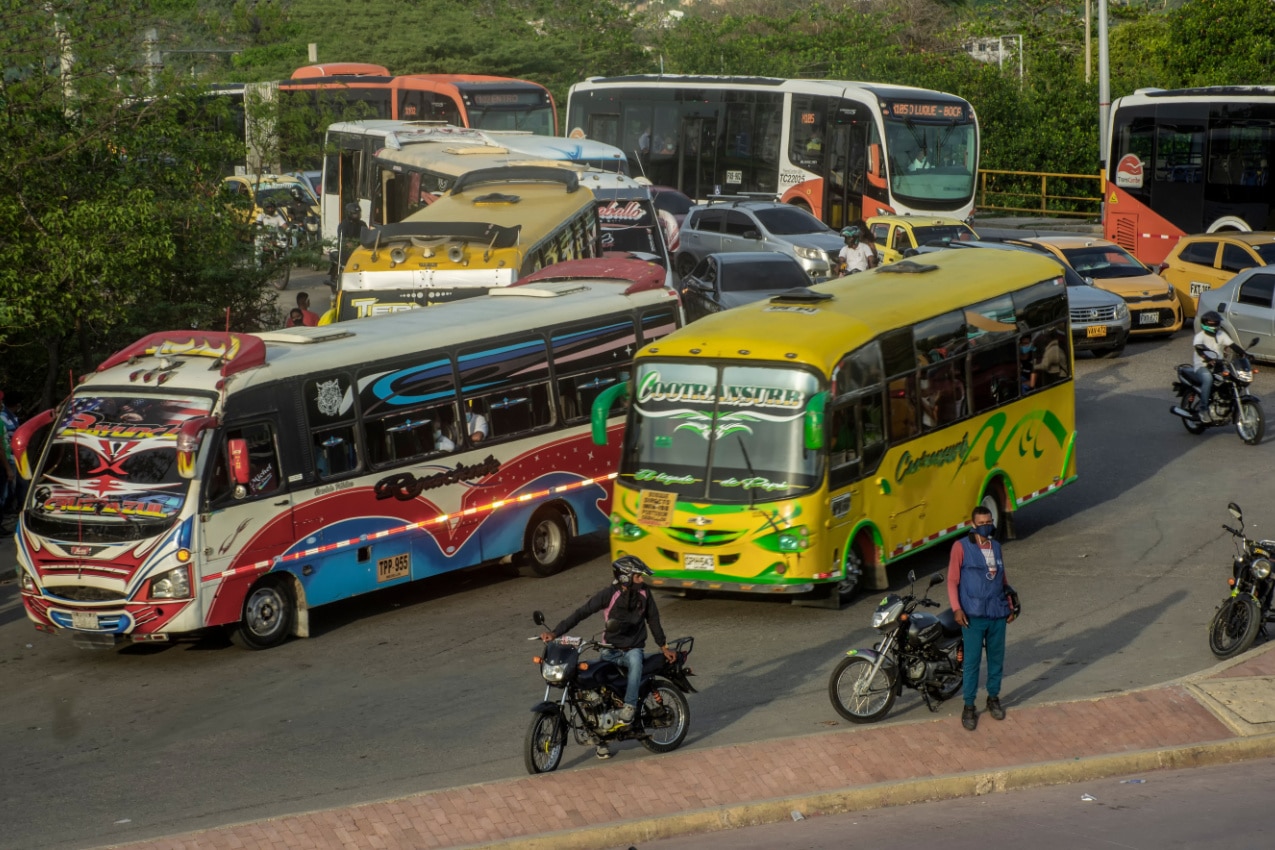
Public transportation isn’t safe in Cartagena, but licensed taxis are a safe bet.
As per Canada’s travel advisory for Colombia, city and rural buses are frequent sites of petty theft, with armed groups potentially escalating to violent robberies on rural routes.
Taxis in Cartagena are plenty, but expensive, with some drivers trying to take advantage of tourists. To dodge this, stick to licensed cabs, easily identified by their yellow color and “Servicio Publico” license plates. You can always negotiate the fare before hopping into the taxi to avoid being overcharged.
Remember: Violent crimes have been known to happen in unlicensed taxis, so avoid hailing cabs on the street if you can help it.
If you find yourself in a situation where street-hailing is unavoidable:
- Opt for cabs with license plates
- Don’t enter a cab that has passengers in it
- Memorize the license plate number, and share this information with family or friends
Road Safety in Cartagena
The roads in Cartagena are generally safe, but the traffic in certain areas is very heavy.
Traffic in the historical center, for instance, seems to always be at a standstill. The roads are narrow, and the sidewalks are not wide enough for the number of pedestrians.
On the outskirts of the city, roads are poorly maintained, and some mountain roads lack crash barriers or guardrails. Watch out for surprise guests on the countryside roads—livestock.
Aggressive driving is common, with traffic laws often ignored and rarely enforced. It’s totally normal here for buses and cars to hit the brakes right in the middle of the road without any clear indication.
All things considered, Colombia’s roads are for experienced drivers, but even then, we still recommend that you don’t drive on them. It’s not worth the hassle of dealing with traffic, road quality, driving culture, and questionable safety.
If you are driving, remember to return to your hotel before sunset. Some highways and roads may lack proper lighting and you expose yourself to carjacking and other violent crimes.
Always park in a secure parking spot (inside of your hotel’s premises would be ideal) and never leave valuables in the car.
Medical Care Quality in Cartagena
Cartagena has great healthcare.
The World Health Organization (WHO) ranks Colombia’s health system 22nd globally, leaving nations like the United States (#37), Canada (#30), Australia (#33), and Germany (#25) trailing behind.
In Cartagena, the best quality treatment can be found in:
- Hospital Universitario Carlos Haime (Serena del Mar)
- Nuevo Hospital Bocagrande
- E.S.E Hospital Universitario Del Caribe
- S.E Clínica de Maternidad Rafael Calvo
- Clínica Medihelp Services
Pharmacies are plenty, with some working 24/7. Plus, the medications that need a prescription in the USA are often over-the-counter here, at wallet-friendly prices. So you can stock up before jetting back home.
Consider some travel health insurance to avoid dealing with a financial headache if an accident occurs. Make sure it covers your chosen hospital or clinic in Cartagena. Consider options like VisitorsCoverage, Insured Nomads, and SafetyWing.
Is It Safe to Travel Solo in Cartagena?
If you’re traveling alone, we refer to the U.S. travel advisory on this and recommend that you postpone your Cartagena visit for safer times. It’s a better idea to join a travel group to visit Columbia.
If you decide to travel solo regardless, be very cautious. Stay close to Cartagena’s old town—this UNESCO World Heritage Site is a tourist hotspot, which means more eyes watching, including those of the police.
Skip the nighttime adventures altogether. Criminals often see solo travelers as easy targets, and wandering alone late at night might lead to some unwanted scenarios—and this could be true almost anywhere. Cartagena may be one of the safer options for a Colombian visit, but you still need to be careful.
Perils of Nature: The Risk of Natural Disasters in Cartagena
Cartagena, like many coastal cities, is susceptible to two natural disasters: hurricanes and earthquakes.
Hurricanes
Cartagena’s last major encounter was with Hurricane Iota in 2020.
Iota was a Category-5 hurricane. It hit the Colombian island of Providencia, while Cartagena suffered severe flooding that submerged 70% of the city.
On a brighter note, dodging hurricanes is very easy—just don’t visit during the hurricane season—early June to late November. Hurricanes take days to form, so monitor their activity on the National Hurricane Center and if a hurricane is on the horizon and you’re in Cartagena, local authorities will roll out safety measures and guide you to the nearest shelters.
Earthquakes
Cartagena doesn’t see many earthquakes, and when they do happen, they’re usually on the lower end of the Richter scale. The most recent shake-up on December 15 had a 4.5 magnitude.
Stronger earthquakes are rare and historically they’ve occurred every 35 to 40 years. The biggest earthquake in Cartagena was a 6.2-magnitude quake in 1999.
Unlike hurricanes, earthquakes don’t announce they’re about to strike. So, if the ground starts shaking:
- Drop to the ground
- Take cover under something sturdy
- Hold on until the shaking ceases
If you’re outdoors, find a clear spot away from buildings and trees and stick to the drop, cover, and hold-on routine.
Now, if you’re seaside and notice the water pulling back from the aftershock—tsunamis may be on the horizon:
- Don’t stick around, move away quickly
- Head to higher ground
For real-time earthquake updates, follow DataBaseEarth.
Beware the Silent Threat: Carbon Monoxide Poisoning in Cartagena
Carbon monoxide (CO) is released from broken, poorly maintained, or inappropriately vented appliances, and can turn a hotel room into a hazard zone.
Cartagena hasn’t suffered any CO incidents, however, in 2019, a tourist in El Poblado stayed at an Airbnb with a faulty water heater. There was no carbon monoxide detector to blare an alarm, so the gas leaked in, poisoning the tourist.
Beyond Colombia, tragedies unfolded in the Bahamas and Mexico. Three lives were lost at a Sandals resort in 2022, and another grim incident hit Mexico City that same year.
Unfortunately, hotels and rentals aren’t obligated to install CO detectors in their rooms, so there’s no guarantee that your room will have one. But you can always purchase a portable CO detector for your travels. It’s a small gadget that could save you from wondering if your room is CO-free.
Watch out for symptoms similar to those of the flu—headaches, vomiting, dizziness. If you feel off, seek medical help. Long-term exposure to CO can lead to paralysis, brain damage, or worse, loss of life.
Serenity by the Shore: The Safety of Cartagena Beaches
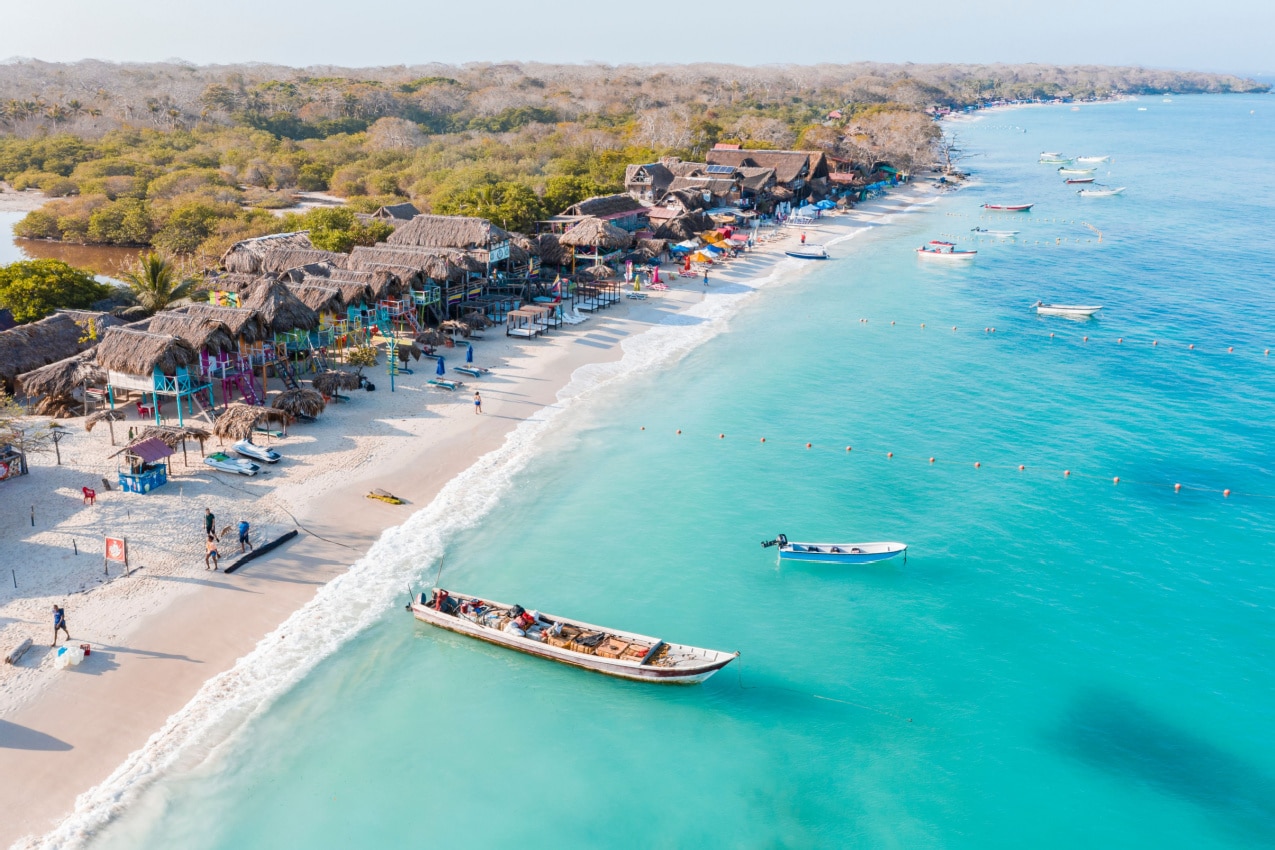
Cartagena’s beaches are generally safe.
There are more than 100 lifeguards and 26 beach surveillance centers across Cartagena. They operate from June to September, ensuring your summer days are worry-free.
The lifeguard stations are posted at hotspots like San Gines, Mar de Cristal, Sirenas, Galua, Cala Cortina, Entremares, El Portus, and various others along the Mediterranean coast and Mar Menor. If you plan a beach day, aim for these.
Nine beaches in Cartagena are notorious for their unpredictable waves and dangerous currents—Alcatraces, Playa de los Pescadores, Mar Linda, Bocana, Café del Mar, Frente al Colegio Los Salesianos, Monumentos de los Océanos, Playa de Crespo, and Frente al semáforo de Marbella. Access here is restricted.
A helpful way to gauge beach safety is by checking beach flags. Note, however, that not all beaches have safety flags. Each color represents a different level of safety:
- Red Flag: Hold off on the swim. Strong waves and currents
- Yellow Flag: Dive in, but tread carefully. Challenging waves or currents
- Green Flag: It’s a go! The sea is calm
- Purple Flag: Pause. Sharks and other sea creatures might be around, so swim with caution
Sharks aren’t the regulars in Cartagena but do sometimes appear on beaches across Colombia. In the spring of 2022, for instance, a shark visited the Colombian island of Isla de San Andres.
Sharks stay away from beaches where there are many swimmers, so safety is in numbers. Stick with the crowds when taking a dip, and skip night swims. Sharks do their hunting after sunset. You don’t want to stay at the beach for that long anyway, as crime is more frequent at nighttime.
Cartagena Weather Patterns: What to Expect
Cartagena has a tropical climate. The weather is warm year-round, with temperatures ranging from 76°F to 88°F (about 24.4°C to 31.1°C).
The sunny stretch spans December to April, peaking in clarity during January when the sky is clear 51% of the time.
The dry season is sunny, with plenty of sunshine and minimal rainfall. February has the least wet days (0.5 on average), while January sees the least rainfall (0.1 inches on average).
The May-to-November period is cloudier, with September as the cloudiest month (95% cloudy).
Clouds also bring rain, ushering in Cartagena’s wet season, where there’s over a 27% chance of a given day being wet. October clinches the record for the most wet days (15.8 on average) and the highest rainfall (6.1 inches on average).
The ocean is inviting year-round. September boasts the warmest water at an average of 84°F (about 28.9°C), while March brings the coolest at 80°F (about 26.7°C).
Monthly Average Temperatures in Cartagena
| Month | Fahrenheit (°F) | Celsius (°C) |
| January | 80 | 26.6 |
| February | 81 | 27.2 |
| March | 81 | 27.2 |
| April | 82 | 27.7 |
| May | 83 | 28.3 |
| June | 83 | 28.3 |
| July | 83 | 28.3 |
| August | 83 | 28.3 |
| September | 83 | 28.3 |
| October | 82 | 27.7 |
| November | 82 | 27.7 |
| December | 81 | 27.2 |
Source: WeatherSpark, 2024 data
When Is the Best Time to Visit Cartagena?
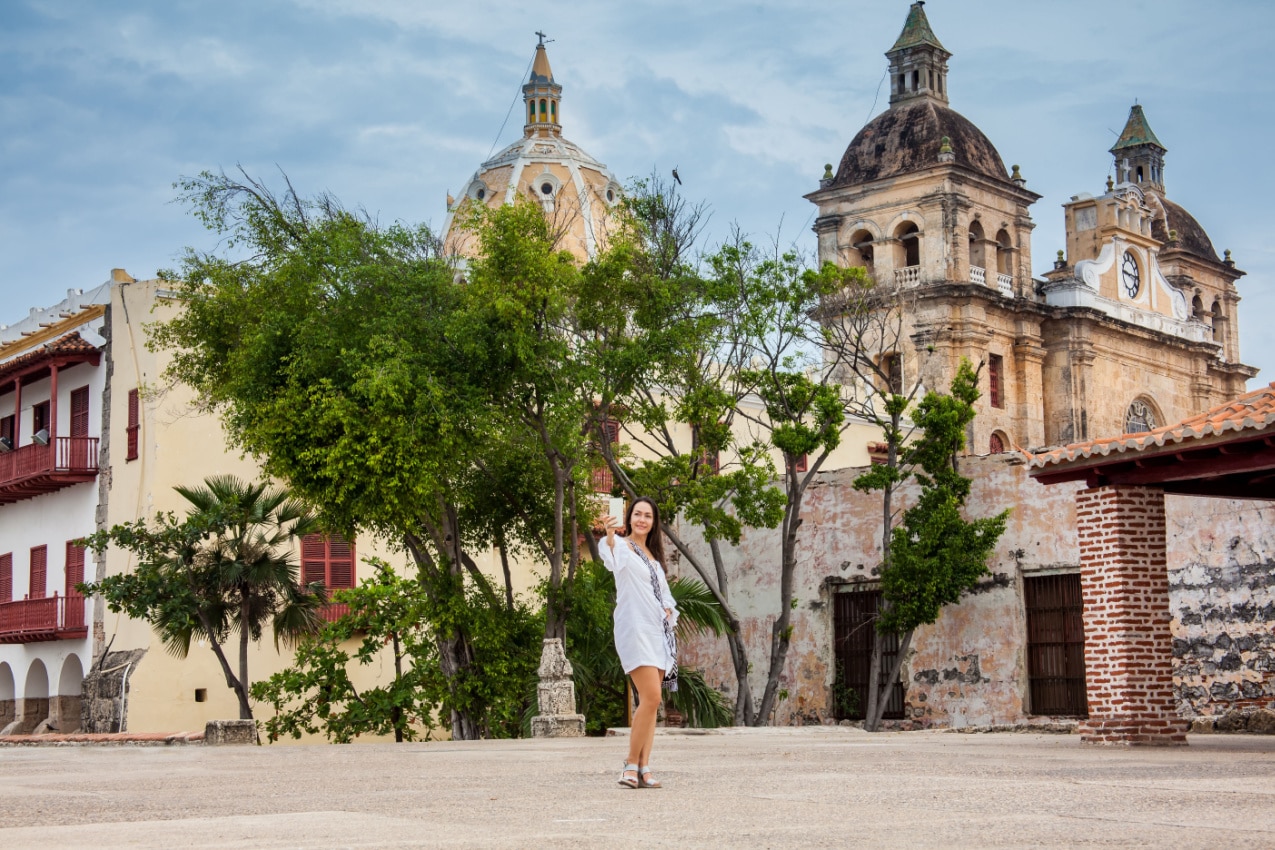
The best and safest time to visit Cartagena is from December to April.
The stretch welcomes the dry season, aka Cartagena’s summer, pulling in the biggest crowd. And as we said—safety is in numbers. Plus, the two biggest festivities happen during this balmy stretch—the Cartagena Carnival in February and the Cartagena Music Festival in January, where you can immerse yourself in the soulful Colombian culture.
Now, if you’re chasing a quieter scene with budget-friendly deals, book your trip in May or September. They’re outside the peak but still offer good weather and enough tourists to keep you feeling safe. Lifeguards are still on duty, ensuring beach safety during your stay.
Do not visit during the low season, from June to October. Cheaper rates might be enticing, but the empty streets make you a target of crime. Plus, it’s the wet season, so the frequent rain and sticky humidity may ruin your outdoor plans. Who wants to carry an umbrella everywhere?
How to Stay Safe in Cartagena
- Don’t get lost. Use Google Maps to navigate around town.
- If you get hungry after dark, avoid going out. Opt for food delivery from services like Uber Eats and Glovo.
- Stay updated on the current safety situation. Read local news on El Tiempo and Colombia Reports.
- Help the authorities locate you in case things go south. Register in the Smart Traveler Enrollment Program (STEP) for emergency assistance.
- Secure your belongings. Drive-by bag snatchings are regular, so keep valuables, including passports, secure.
- Beware of impersonators. Thieves posing as police may approach you. Ask to see their ID and verify your documents or currency at the police station; however, if threatened, don’t resist.
- Never leave your drinks unattended. Someone may spike your drink, causing you to be more vulnerable to risks like assault and theft.
- Public transportation isn’t safe. City and rural buses are frequent sites of theft. Opt for licensed taxis; you can call one on Tappsi (Google Play/ Apple Store).
- Avoid risky areas. The high-crime zones include El Paraiso, Sector La Magdalena, La Maria, Olaya, and El Pozon.
- Book your hotel in safe zones. Options include Bocagrande, San Diego, and the Historic Center.
- Book on trustworthy sites. Reliable options are Booking and AirBnb.Check the reviews before booking a place. Double-check that your rental has great security.
Emergency Numbers
- National emergency number: 123
- Tourist Police: (1) 3374413
- Metropolitan Police: 112
- Fire Department: 119
- Medical Emergencies: 125
- Traffic Police: 127
- Toxicological Centre: 136
- Civil Defense: 144
- DAS (Security Department): 153
- DIJIN (Directorate of Judicial Police): 157
- GAULA (Kidnapping and Extortion Squad): 165
If You’re Set on Visiting Columbia, Cartagena Is a Safe Choice
Diving deep into this city’s safety profile, we’ve acknowledged that, yes, Cartagena is a safer bet than some other parts of Colombia with more crime.
Though it still doesn’t measure up to some of the world’s safest cities, like Copenhagen, Tokyo, or Amsterdam, with increased vigilance, your visit to Cartagena will be just as exciting and special in its own right. So when you arrive in sunny Cartagena, be careful and remember the precautions we shared today—they could make all the difference at a critical moment. Safe travels!
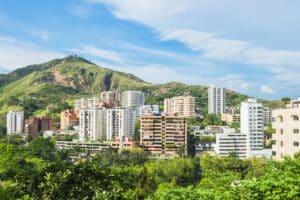
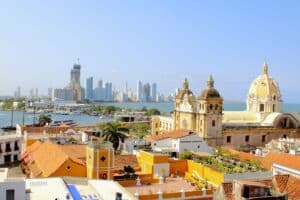
Awesome
Was in Cartagena just last February. Never once felt unsafe. Such great people all through the country. Just use street smarts as you would in New York City or other metropolitan areas. Cannot wait to return and see what i can discover next.
Hi David, thanks for reading and we really appreciate your first-hand experiences. Some of our team has never been there and can’t wait to go!